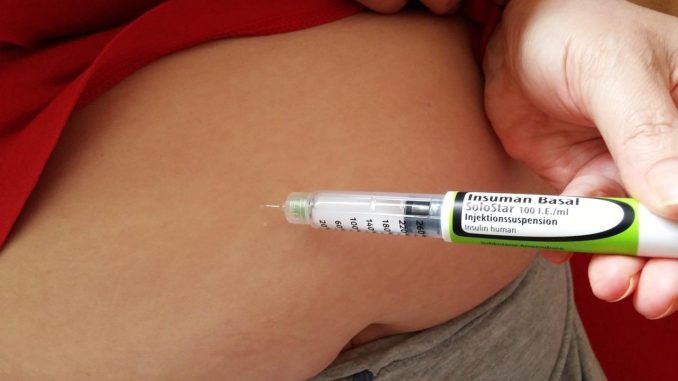
If you think about it, diabetes and the fatty liver go together like a horse and carriage. When you have diabetes, your body often converts excess sugar into fat. This fat builds up in your organs and can lead to serious health problems such as scar tissue formation in your liver ( cirrhosis ). If left untreated, the fatty liver can develop into a disease known as non-alcoholic steatohepatitis ( NASH ), which affects the part of the liver known as the fatty layer. These two conditions are called type 2 diabetes, and the fatty liver forms what is known as “the triad” of diabetes, inflammation, and NASH. In this article, we look at how diabetes and the fatty liver interact with each other and how you can manage them.
WHAT ARE DIABETES AND FATTY LIVER DIABETES AND THE FATTY LIVER?
Type 2 diabetes is a condition caused by an imbalance between Insulin and histamine, which the body produces in response to inflammation. The inflammation triggered by high levels of saturated fat in the diet can damage the liver. This condition is known as fatty liver and is caused by various reasons, including the accumulation of fat in the liver due to an inadequate diet. Typically, the fatty liver develops in people who are obese and consume a high-fat diet. It is not common in lean people, but people with an extra chromosome inherited as an extra set of twins called a “Dapple.” People with one Dapple chromosome are called “dual diagnosis” cases and are more likely to develop fatty liver due to the obesity resulting from the additional chromosome.
DOES FATTY LIVER CAUSE DIABETES?
Studies have looked at mice that have been genetically altered to produce a high level of Insulin. These mice are called “obese” and are very Insulin resistant. Their fatty livers develop because the mice are constantly in inflammation. When researchers get mice with normal cholesterol levels and a normal diet (normal calories), they do not develop fatty liver. However, when the researchers make the mice fat by giving them high cholesterol levels, they develop fatty liver. The same thing happens in people with type 2 diabetes. They are constantly in inflammation and do not get fatty liver. When they are allowed to get fat, they develop fatty liver.
FATTY LIVER DIABETES TYPE 1
People with fatty liver diabetes type 1 generally are very thirsty. People with this type of diabetes usually have both insulin and blood sugar levels that are very high. They also have high blood pressure and may have a history of heart disease. It usually has retinopathy or damage to the eyes due to macular degeneration and peripheral neuropathy, which is a disease affecting the feet and hands. They are often elderly people, and testing to see if they have diabetes should be done yearly.
SYMPTOMS OF FATTY LIVER DIABETES TYPE 1
Here are some of the most common symptoms of fatty liver diabetes type 1:

#EXTREME FATIGUE
Fatty liver disease can cause chronic, overwhelming fatigue that’s difficult to deal with. If you’re experiencing extreme fatigue, you may feel like you’re losing your mind. This is a common symptom of the disorder and indicates that your body is trying to get rid of the excess fat. You may also notice that you feel like you have to fight to get up again when you sit down.

#LOSS OF APPETITE
Many people with fatty liver diabetes lose appetite and gain a lot of weight when they’re young. This is usually because their bodies are trying to get rid of the fat. As you get older, your body breaks down fatty tissues, so you feel hungry. This usually passes after a while, and your appetite returns to normal.

#WEIGHT LOSS
Suppose you’re losing weight, whether, from weight loss from fatty liver or other causes, it could signify that your body is End-Stage Liver Disease. Your liver is the organ responsible for processing and regulating your body’s main sources of energy (i.e., your muscle and liver).

#EXCESSIVE THIRST
One of the telltale symptoms of fatty liver diabetes is excessive thirst. If you’re not drinking enough water, you may end up with oesophagitis, where the esophagus becomes “waterlogged.” This may indicate to your doctor that you have the disorder.

#CONSTIPATION
The feeling of constipation is one of the most common abdominal symptoms you’ll experience in the early stages of fatty liver diabetes. A low level of stomach acid often causes constipation. Without enough acid, you’re unable to eliminate things from your body. This can lead to water weight gain, increased risk of developing chronic diseases, and even an increased risk of developing colorectal (i.e., intestinal) cancers.

#JAUNDICE (YELLOWING OF THE SKIN AND EYES)
If you notice a yellowing of your skin and eyes, it could be a sign of liver damage. This is particularly a concern if you’re a competitive athlete or working in an industry where you’re exposed to high levels of fluorogenic chemicals, such as exposure to chemicals in paints, varnishes, lacquers, and inks.
FATTY LIVER DIABETES TYPE 2 TREATMENT
Fatty Liver Diabetes Type 2 is a difficult disease to treat. But with the right management plan, you can reduce your chances of getting sick and keep yourself healthy for a long time. Fortunately, there are several viable treatment options ranging from non-invasive to invasive. All of them have their risks and side effects. Before choosing a treatment option, you should know your risks, benefits, and potential side effects to make an informed decision that fits your needs and budget. Here are some available treatments for fatty liver diabetes type 2.
HORMONAL THERAPIES FOR TYPE 2 FATTY LIVER DIABETES
At this time, there is no one specific treatment for all types of fatty liver. A combination of diet, medications, and surgery can help some people. However, not all people with this condition can benefit from this approach. You should discuss your options with your doctor before starting any new dietary or medication regimen. It’s important to remember that dietary changes won’t correct all your underlying metabolic conditions. Moreover, certain medications, like the Insulin used to treat diabetes, can also cause changes in your liver. You should also be aware that certain medications, like anabolic steroids, can also cause changes in your liver. Make sure you discuss your medication regimen with your doctor before taking any new medications.
USE OF EXCESS WEIGHT LOSS
Some people with fatty liver type 2 diabetes also have obesity. This means they’re overweight even though they don’t usually get enough calories from food. It’s particularly common in people with high cholesterol and high blood pressure. If you have excessive weight to lose and are also diabetic, your doctor may put you on a diet to help you lose weight. You may also inject something into your stomach to help you lose weight. These methods don’t work for everyone, so discuss your options with your doctor.
BARIATRIC SURGERY
Bariatric surgery is a common treatment for people with fatty liver diabetes. It’s often called surgery to reduce stomach size because it’s mainly used to eliminate or reduce the amount of stomach acid produced. This procedure often involves a stoma (pouch) where your stomach contents are stored. You’ll continue to eat the same amount of food as before the surgery, but you’ll remove most of it from your stomach. The goal of the surgery is to prevent re-acidification (over-acidity) of your stomach. This can happen if you have too much acid in your stomach after the surgery.
So, your doctor will measure your stomach acid before and after the surgery to monitor for side effects. The procedure is usually done under general anesthesia. You’ll take various drugs to help with the procedure, and you’ll remain in the hospital for a couple of days after the surgery to cleanse and drain your stomach.
INTRAVENOUS INSULIN THERAPY
Insulin is a hormone that helps your body use stored nutrients (like sugar) as fuel. It’s also responsible for regulating the amount of glucose (sugar) in your blood. It’s important to remember that type 2 diabetes is not the same as being hungry. You might eat a huge meal and feel stuffed. But inside, your body is producing too much Insulin. If you eat too much sugar too fast, you might even go into diabetic ketoacidosis, a life-threatening condition.
SURGICAL PROCEDURES AND OTHER THERAPIES
Surgical procedures are usually necessary for people with fatty liver type 2 diabetes. They’re usually done laparoscopically (similar to abdominal surgery), where a doctor carefully passes a stoma (pouch) over your stomach and intestines. This procedure may be followed by a diet and exercise plan to promote hea
LIVER DAMAGE DUE TO DIABETES
People with fatty liver have an increased risk of developing liver disease due to diabetes. This is because the increased level of blood glucose levels causes the liver to be overworked, and consequently, damage occurs. Over time, the liver can become fat and fibrous. People with fatty liver should be monitored closely for signs of liver disease.
DIABETES MEDICATION FOR FATTY LIVER
Various diabetes medications can be used for the treatment of fatty liver. As with most conditions, when you have type 2 diabetes, you need to be careful when using certain medications. A few examples include: – Insulin – Which is the mainstay of treatment and is used to maintain blood sugar. However, due to its effect on the body, it is not good for the liver. – Micronizing HbA1C – This is a blood test to determine the “degree of insulin resistance” in your body. It is estimated that 30-40% of people with type 2 diabetes have some degree of insulin resistance, which is the target range for treating diabetes. – Glucagon – This is another “allosteric” effect of Insulin that can lower blood sugar levels and is used to treat diabetic ketoacidosis (DKA).
CONCLUSION
In conclusion, diabetes and the fatty liver go hand in hand. Both are conditions that cause inflammation in the body and damage the liver. The damage done by diabetes to the liver can lead to an increased risk of developing fatty liver. Various medications and diets can help with the management of the condition. Still, it is important to remember that you should never stop taking your medication or change your diet without medical supervision.


Leave a Reply